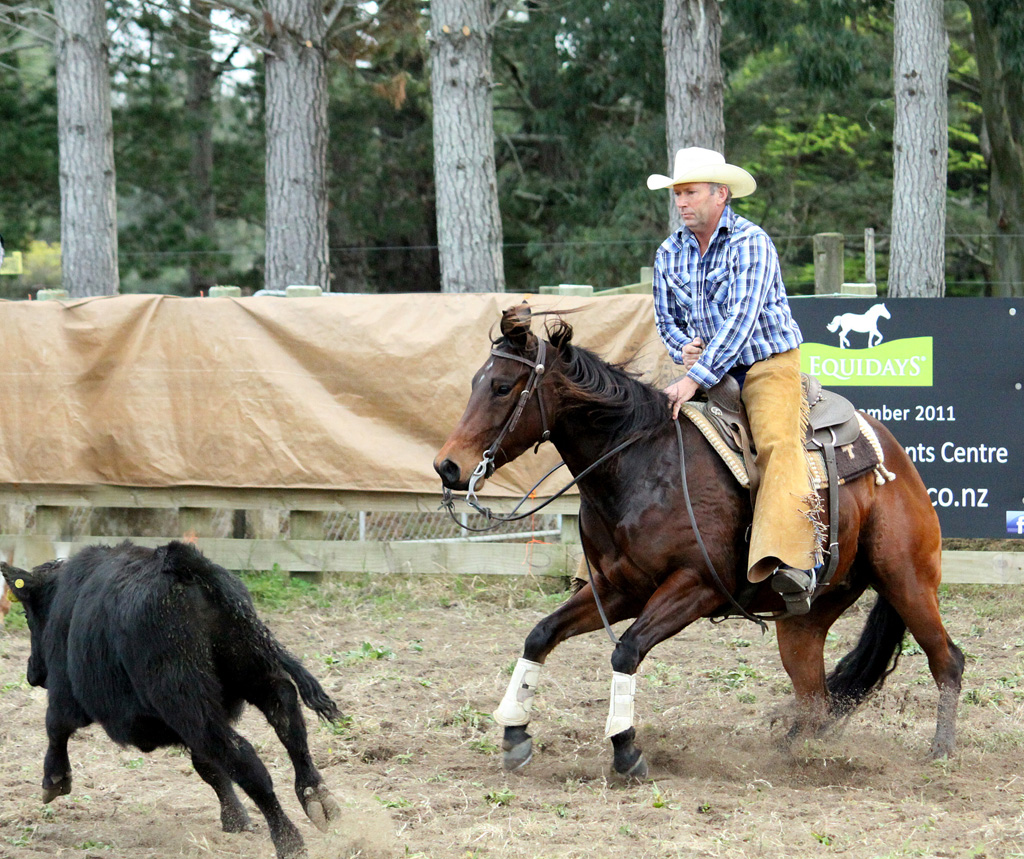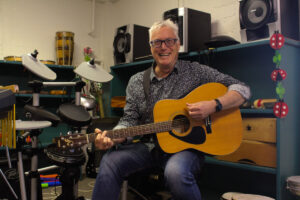Cutting horses dance to outsmart cattle
The horse ‘dances with’ rather than shepherds. It is of an elite group with the trait to eye the cattle, get down to its level and outsmart its every attempt to slip past. It makes for an entertaining show, and has been held at the annual Agricultural Fieldays for the past four years.
We are all familiar with the role of the sheep dog and the trials held for it in New Zealand. A flock of sheep are herded into an enclosure, a white-fenced pen awaits and the vigilant sheep dog approaches. In response to a piercing whistle it eyeballs its challengers and anticipates their next move.

Now imagine a horse filling the role of the dog and herding cattle, not sheep.
The horse ‘dances with’ rather than shepherds. It is of an elite group with the trait to eye the cattle, get down to its level and outsmart its every attempt to slip past. It makes for an entertaining show, and has been held at the annual Agricultural Fieldays for the past four years.
The test of intelligence, training, breed and skill under a strict two and a half minute time limit makes for some daring displays from both rider and horse.
The sport is the act of separating a chosen calf from a herd and stopping it from returning to the herd, with the horse demonstrating control of the animal through “running, stopping and turning”.
New Zealand Cutting Horse Association president and show approver Graeme McInnes likens the sport to dressage.
McInnes, a 15-year cutting horse veteran from Hikurangi, north of Whangarei, says for the rider it is more about the use of your hands and legs rather than any other aid.
There is no use of reins once the cutting process begins – it is more about letting the animal do the work.
The sport isn’t just an artful display. There is a string of rules that come with it.
The National Cutting Horse Association rulebook has something like 20 infringements that can cost a competitor up to five point deductions from their overall score of 60-80.
The rider cannot encourage or steer their horse once the selected calf has successfully been separated from the herd.
If reins appear to be tightened or a hand or foot goes past the boundary of “behind the horse’s shoulder”, the rider is penalised. Same goes for misdemeanors on the horses’ behalf: pawing, biting, kicking of any of the cattle is a no-no, as is turning the wrong way.
The NZCHA has drawn good Fieldays crowds, and McInnes sees it as good exposure, an opportunity to be more visual or present in the agriculture.




